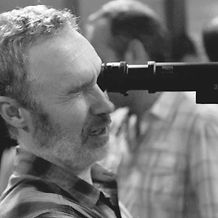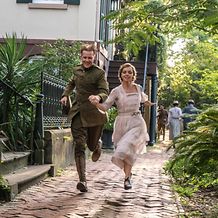The Amazon series "Z: The Beginning of Everything" centers on the 1920s American socialite Zelda Fitzgerald and her tempestuous marriage to novelist F. Scott Fitzgerald. As this was one of the first shows with UHD and HDR deliverables, the main grade was in Rec 709 with a trim pass for HDR, but Amazon’s commitment to High Dynamic Range content is increasing and it has selected ALEXA and AMIRA as its cameras of choice for the best overall UHD/HDR image quality. DP Tim Orr spoke to ARRI about shooting the pilot with ALEXA XT cameras, recording in ProRes 3.2K.
Were you and director Tim Blake Nelson after a particular look for this show?
The inspiration mainly came from still photography of the period, particularly Autochromes, which have a soft, painterly feel. But we didn’t want the starkness and desaturation of the Autochrome look to overwhelm the characters and the story, so we also played with Kodachrome. Working with colorist Sean Dunckley I tested LUTs based on both processes, and eventually settled on two LUTs that we used for the show.
Why did you choose ALEXA, and was HDR a concern while you were shooting?
I have used the ALEXA ever since it came out and I’m very comfortable with the camera, knowing what it can deliver. A lot of our interior scenes were definitely low light level and of course sensitivity and dynamic range are great strengths of the ALEXA. I don’t tend to alter the EI from 800; I know how far I can push it and still have a very safe digital negative.
I don’t think you could choose a better camera than ALEXA for HDR and I didn’t find that aspect to be troubling at all. One of the only things you have to be a little more aware of – that you don’t necessarily see on the set – is what will be visible out of windows. Because with HDR you might end up with more highlight detail than you thought, which could be an issue, especially on a period show when you’re sometimes relying on windows being blown out. We didn’t have a situation like that on this pilot, but it’s something to be aware of.
Going forward, ARRI recommends on-set HDR monitoring – what are your thoughts on that?
With digital we’re used to seeing the image on set and there shouldn’t be any surprises, but HDR isn’t as easy to monitor as Log C or a LUT. It certainly could be helpful, but I also think that people might get overly caught up in it. If it’s the type of thing you can turn on and off, so you could check the HDR for a specific issue or a specific shot, then I could see that being very useful, but it’s probably not something I would want to spend too much of my time with.
Did you find yourself checking the histogram more often?
Our DIT was looking things over very carefully in the truck, so I didn’t really have to worry about it. There was one scene, a long dinner scene that was supposed to take place at dusk; it was more than four pages long and took at least six hours to shoot, so trying to maintain the windows at the correct level of brightness was a bit difficult. That was the only time I can remember being a little more keenly aware of what the extended dynamic range might do.
What was your approach to the camerawork?
We tried to use a lot of movement and a lot of Steadicam to do things as much in one shot as we could, particularly scenes of Zelda out in the world, walking with her friends or going to dances. The counterpoint to that was Zelda’s home life and the scenes with her father, who is a bit of a disciplinarian. Those scenes were much more static and formal, with more precision to the framing.
You weren’t at the HDR grade, is that right?
No, but then the HDR grade was a secondary pass on this show. I was in communication with the colorist to make him aware of what the intent of the photography was, and to address any issues that might arise. The thing to look out for is situations where there might be unintended consequences of the HDR, where it starts to change the visual storytelling. That’s where it could become problematic, but it was very smooth on this pilot and there were no issues.
Photos: Nicole Rivelli © Amazon Prime Video




